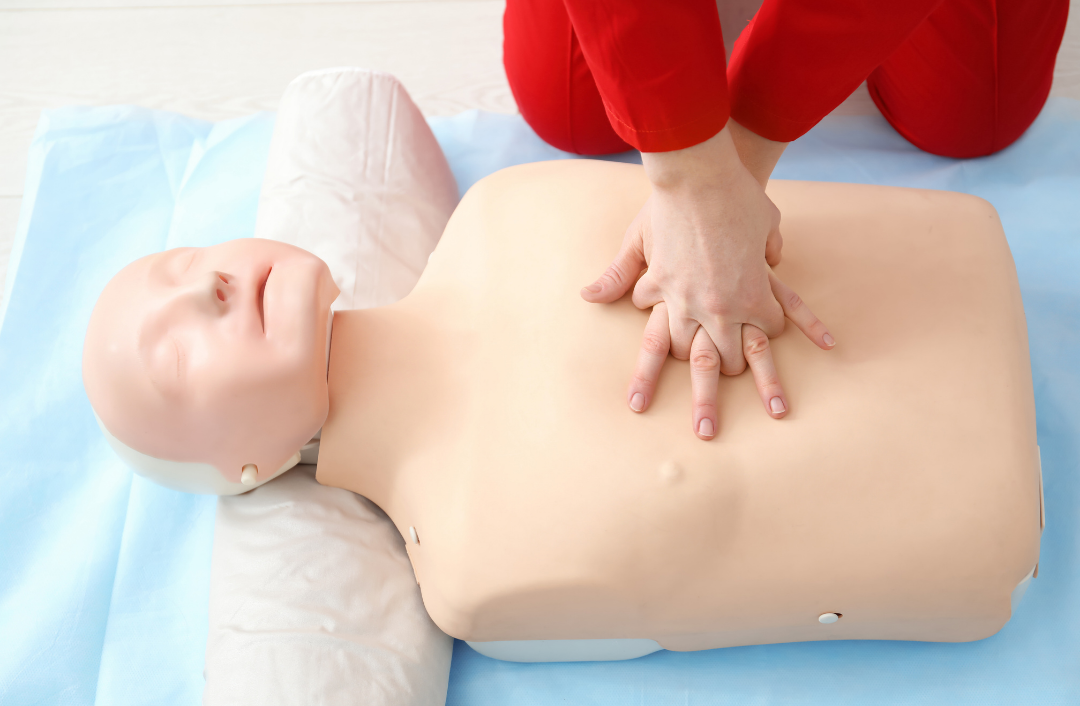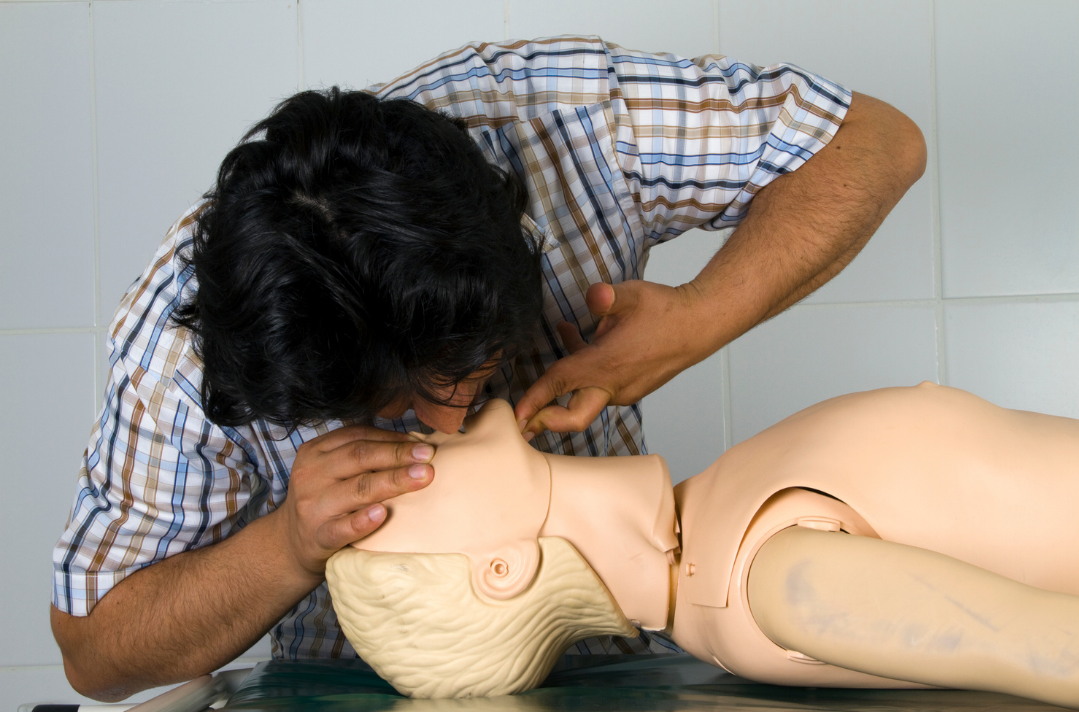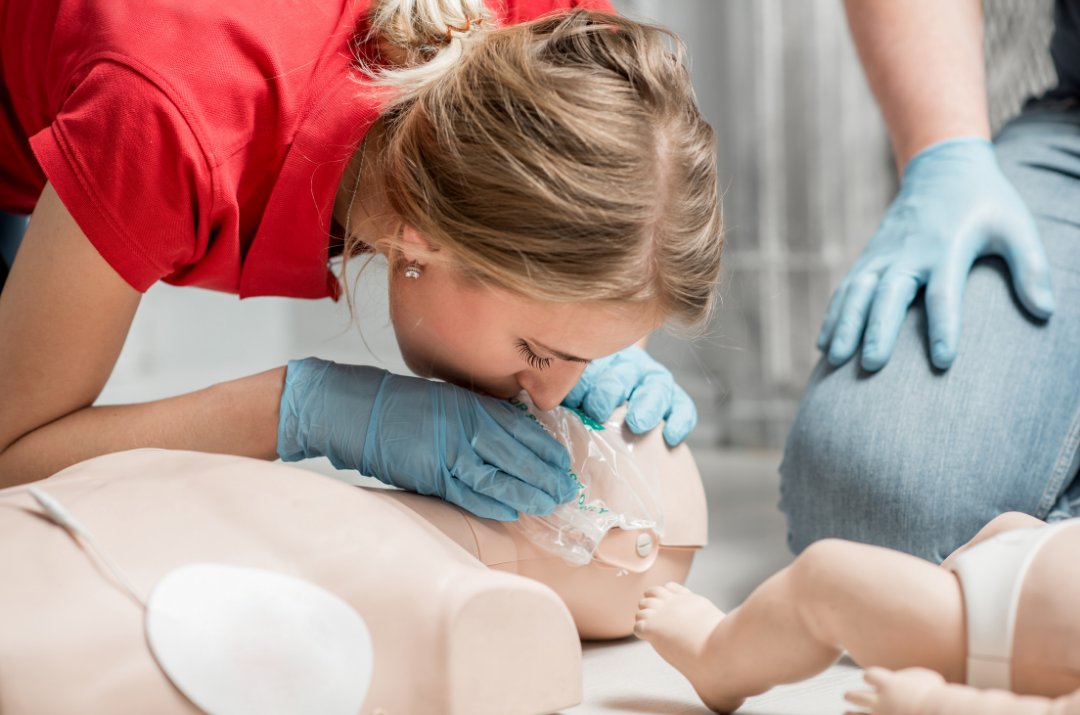What is CPR and how to perform it?
What would you do if a loved one stopped breathing? Would you know what to do?
I have found that the easiest way to perform CPR is PUSH DOWN HARD AND FAST on a persons chest!
Research tells us that once you have checked DRSA & Breathing, if a person is not breathing normally, it means their heart is not working properly and they need CPR. The Australian Resuscitation Council state that any attempt at resuscitation is better than no attempt!
In this blog, I want to share with you what CPR stands for and how to provide the basic compressions and rescue breaths.

What is Cardiopulmonary Resuscitation?
Cardio = Heart/ blood = Compressions
Pulmonary = Lungs/ oxygen = Breaths
Resuscitation = the act of reviving or restoring life in someone
Resuscitation refers to the act of reviving or restoring life in someone who is unconscious, unresponsive, or experiencing a medical emergency such as cardiac arrest or respiratory failure. The goal of resuscitation is to intervene promptly and provide the necessary medical procedures and techniques to sustain vital functions, such as breathing and circulation, until professional medical help arrives.
Cardiopulmonary resuscitation (CPR), which includes chest compressions and rescue breaths, to manually circulate oxygenated blood throughout the body, importantly getting that oxygenated blood to the brain to keep the brain alive.
The purpose of CPR is to provide immediate, life-saving care to increase the chances of survival and minimize the risk of permanent damage to vital organs, such as the brain, that can occur when oxygen and blood flow are disrupted. Anyone can provide CPR to an unresponsive, not breathing casualty.
It's important to note that CPR is a time-sensitive procedure, and early intervention significantly improves the outcomes for individuals experiencing medical emergencies. In cases of cardiac arrest, for example, immediate CPR and defibrillation can greatly increase the chances of successful resuscitation and survival.
The ratio is 30 compressions: 2 breaths for all casualty’s no matter their age or size. The Australian Resuscitation Council guidelines state ‘If you are unwilling or unable to provide rescue breaths, provide compression only CPR.’ Compressions are the most important component of CPR. There is enough oxygenated blood in a casualty’s body that compressions circulates the already oxygenated blood around the body, specifically circulating it to the brain to keep the brain alive.
Chest compressions
Place one hand on the center of the casualty’s chest (on the hard sternum) with your fingers pointing away from you (North or 12 o’clock from your body). Place your other hand on top of the 1st hand and interlock your fingers. Get your body and shoulders over the top of the casualty, lock your elbows in, arms straight and get ready to push hard. You want to push 1/3 of the casualty’s chest depth (guesstimate the 1/3). Compressing between 100-120 beats per minute (approx. 1½ - 2 per second). Compress 30 times then provide 2 breaths (with the use of a face shield) continue this for 2 minutes, then rotate rescuers if available.

Rescue breaths
After every 30 compressions, provide two rescue breaths. Maintain the open airway, with the appropriate head tilt and pinch the casualty nose closed. Using a face shield or pocket mask, place your mouth firmly over their mouth and exhale gently until you see the chest rise. Once you see it rise, pause until it deflates and perform another breath. Each breath should last about one second. Complete 2 breaths in approx. 5 seconds.

When to stop providing CPR?
Continue the cycles of 30 chest compressions followed by two rescue breaths until the casualty shows signs of life, emergency help arrives, or you become too exhausted to continue. It is also recommended that you rotate rescuers performing CPR every 2 minutes or when you need too. Once a defibrillator becomes available, one rescuer should continue CPR while the other sets up the defibrillator on the casualty straight away.
CPR is used to preserve life, Defibrillator’s save lives!
Remember to follow DRSABCD in all first aid emergencies, especially when performing CPR. You can find more information on DRSABCD in the blog list.
If you have found value from this blog, please leave a comment in the comment section, share it with your friends and visit my Instagram and Facebook pages.
